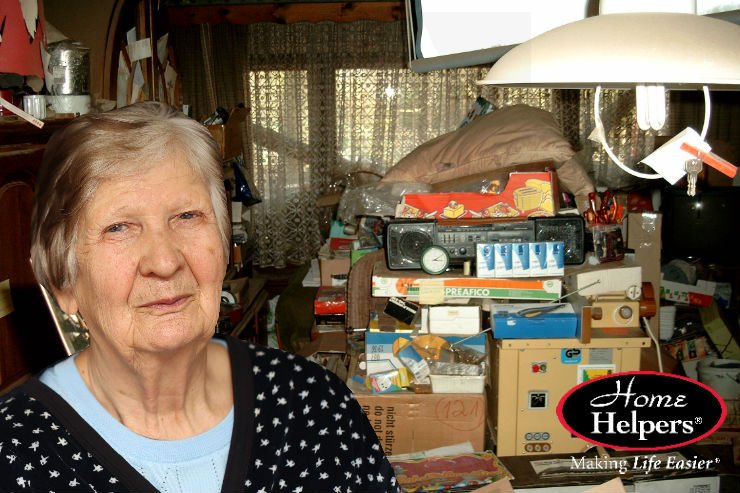Acting as a caregiver for anyone with dementia can be challenging just on its own. They may be in an assisted living situation, with family members or even living on their own. As is often the case, many of these individuals struggle with tendencies of hoarding disorder. This can be troubling for loved ones caring for them and dealing with dementia makes it even more difficult. So how do you know when they are just collecting clutter or crossing the line into hoarding?
What Exactly Is Hoarding?
Hoarding is the behavior of accumulating endless clutter or items that most people would consider worthless. This could be trash, food, or even specific items in excessive quantities. Ordinary possessions can seem impossible to get rid of, making a hoarder come under extreme duress when challenged with the need to throw things away. Most hoarders have cluttered their homes to the point of being unsafe or unsanitary. The behaviors usually start early in life as a form of coping with stress or loss. It can progress over time, creating a nightmarish scenario for those trying to help. Here are a few characteristics of hoarding:
- Refusing to throw out anything, even if it has no value or is deemed by most people as trash.
- Collecting clutter to the point of making rooms in a house impossible to use for their intended purpose.
- Items have stacked up to the point of causing great danger, both to the resident and to anyone who tries to walk through the house. Often, the danger for fire or other emergencies can be very real.
When you factor the disorder of hoarding with dementia, it can be very challenging. Dementia symptoms often come as hoarding behaviors which begin as hiding or rummaging through clutter. As dementia progresses, the ability to make healthy decisions is decreased, along with the ability to see the hoarding for what it is.
While hoarding is most often connected with early onset dementia, it can happen at any stage of the disease and often does. The inability to control behaviors and tendencies that involve collecting endless clutter is really a sign of the individual with dementia trying to retain some control over their lives. Often, there is much loss and pain that the person is trying to cover and hoarding these items gives them a “wall” of protection against the outside world. At its worst, they may not be able to recognize family members or friends as the disease progresses, but will hang onto their possessions with tight fists.
Managing Hoarding Behavior
It is never a good idea to try and go clean out the home of a hoarder, even with the best of intentions. This can often send them into a tailspin that can be very difficult to recover from. Dementia has enough challenges without adding to it with the trauma of discovering their items have been moved or thrown out. Instead, try these tips:
- Always involve the dementia patient in the de-cluttering process. Never throw out anything without their permission.
- Think safety first. If it’s too stressful, then only move or toss what is needed to stay safe.
- Find creative ways to negotiate. Taking pictures of donated items can be a great way to do this. It allows them to still see their precious possessions.
- Remove all items right away that are going to be thrown out or donated. If those items stay, the chances of them being brought back in the hoarded home are very high.
- Give very small areas for the person to go through to avoid becoming overwhelmed.
- Bring plenty of support. Family and friends who are patient and understanding and even a therapist on hand can greatly increase the success of a de-cluttering process.
For more information, please contact us today.

